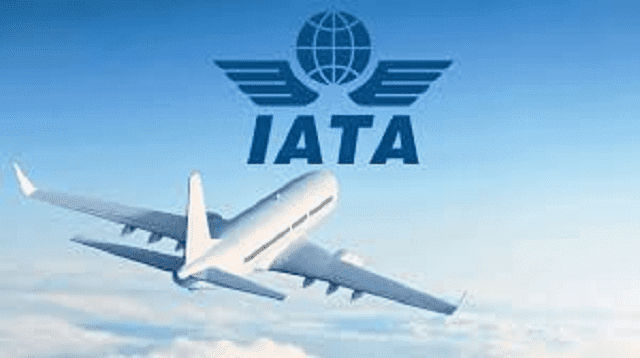The global aviation industry has witnessed a robust upswing in passenger demand during July 2025, according to the latest data released by the International Air Transport Association (IATA). The organization reported a 4% increase in global passenger demand compared to July 2024, driven primarily by vigorous summer travel activity across the Northern Hemisphere. This growth reflects the resilience and adaptability of the aviation sector, which continues to rebound from previous global disruptions while navigating an evolving economic and geopolitical landscape.
The data, published on Thursday, September 11, 2025, highlights several key metrics that underscore the strength of the global air travel market. Overall capacity, measured in available seat kilometers (ASK), rose by 4.4% year-on-year, indicating that airlines have scaled up operations to meet the heightened demand. However, the global load factor—a measure of how efficiently airlines are filling their seats—experienced a slight decline of 0.4 percentage points, settling at 85.5%. This minor dip suggests that while demand is strong, capacity growth has marginally outpaced passenger numbers in some regions.
The surge in demand was evident across both international and domestic markets, with international traffic climbing by 5.3% compared to the previous year. International capacity increased by 5.8%, and the load factor for these routes stood at a healthy 85.6%. Domestic markets also showed positive growth, with demand rising by 1.9% and capacity expanding by 2.4%. However, the domestic load factor saw a slight decrease to 85.2%, reflecting a similar trend of capacity growth slightly outpacing passenger uptake.
Willie Walsh, IATA’s Director General, expressed optimism about the industry’s performance, stating, “It’s been a good northern summer season for airlines. Momentum has grown over the peak season with July demand reaching four percent growth. That trend appears across all regions and is particularly evident for international travel.” Walsh’s remarks highlight the pivotal role of the summer travel season, traditionally a peak period for airlines, in driving the industry’s recovery and growth.
Regional Performance: A Mixed but Promising Picture
The IATA report provides a detailed breakdown of regional performance, revealing a varied yet broadly positive picture. Each region exhibited unique trends influenced by local economic conditions, travel policies, and market dynamics.
Africa: Steady Growth Amid Connectivity Gains
In Africa, passenger demand grew by 2.8% compared to July 2024, supported by stronger connectivity on Africa–Asia routes. This growth reflects the increasing importance of air travel in fostering economic and cultural ties between the two continents. African airlines have been working to expand their networks, particularly with Asia, as trade and tourism continue to flourish. The region’s load factor remained competitive, though specific figures were not detailed in the report. The steady growth in Africa underscores the continent’s potential as an emerging aviation market, despite challenges such as infrastructure limitations and economic volatility in certain areas.
Asia-Pacific: Robust Demand Fuels Growth
The Asia-Pacific region recorded the second-highest growth rate globally, with an impressive 8.7% increase in passenger demand. This surge was driven by strong intra-regional travel and growing international connectivity, particularly as economies in the region continue to recover and reopen to tourism. The high demand reflects the region’s pivotal role in global aviation, with major hubs like Singapore, Tokyo, and Sydney benefiting from increased travel activity. The load factor in Asia-Pacific was not specified in the report but is likely to have remained strong given the robust demand. Countries such as Japan, in particular, stood out with a record-breaking domestic load factor, as detailed later in this report.
Europe: Solid Gains Despite Capacity Challenges
In Europe, demand rose by 4%, supported by a strong summer travel season across the continent. The region’s load factor reached an impressive 87.3%, one of the highest globally, indicating efficient use of available capacity. European airlines have benefited from a resurgence in leisure travel, particularly to popular destinations in Southern Europe, such as Spain, Italy, and Greece. However, the region faces ongoing challenges, including air traffic control delays and rising operational costs, which may have tempered capacity growth. Despite these hurdles, Europe’s aviation market remains a cornerstone of the global industry, with major carriers continuing to invest in fleet modernization and route expansion.
North America: Modest Growth Amid Route Weakness
North America saw a more modest demand increase of 2.4% compared to July 2024. While this growth is positive, it was tempered by weaker performance on North–South America routes, which may reflect economic uncertainties or shifting travel patterns in the region. The load factor for North America was not specified but is likely to align closely with the global average of 85.5%. Major U.S. and Canadian carriers have focused on optimizing their domestic networks while cautiously expanding international routes, particularly to Europe and Asia. The region’s performance, though less dynamic than others, reflects a stable and mature aviation market.
Middle East: Recovery Gains Momentum
The Middle East recorded a 5.3% increase in passenger demand, a notable recovery from disruptions caused by regional conflicts in June 2025. The region’s airlines, particularly those based in hubs like Dubai, Doha, and Abu Dhabi, have capitalized on their strategic geographic position to connect passengers across Europe, Asia, and Africa. The load factor for the Middle East was not detailed but is likely to be strong given the region’s role as a global transit hub. The recovery in demand highlights the resilience of Middle Eastern carriers, which have invested heavily in premium services and long-haul routes to capture market share.
Latin America: Leading the Global Surge
Latin America emerged as the global leader in passenger demand growth, with an impressive 9.3% surge compared to July 2024. This remarkable performance was driven by strong economic activity, increased tourism, and robust domestic markets, particularly in Brazil. The region’s load factor was not specified but is likely to be among the highest given the significant demand. Latin American airlines have benefited from a growing middle class and improving connectivity, which have fueled both leisure and business travel. The region’s standout performance underscores its growing importance in the global aviation landscape.
Domestic Markets: Brazil and Japan Shine
On the domestic front, the IATA report highlighted exceptional performances in key markets. Brazil continued to outperform, with strong demand growth driven by a robust economy and increasing domestic tourism. The country’s major airlines have expanded their networks to meet this demand, particularly on routes connecting São Paulo, Rio de Janeiro, and other key cities. Brazil’s aviation market has shown remarkable resilience, supported by investments in infrastructure and fleet expansion.
In Japan, airlines achieved a record-breaking domestic load factor of 81.4% in July 2025, the highest since at least 2000. This milestone reflects Japan’s strong recovery from previous travel restrictions and a surge in domestic tourism, particularly during the summer season. Popular destinations such as Hokkaido, Okinawa, and Kyoto have seen significant demand, with airlines optimizing schedules to capitalize on this trend. The record load factor underscores Japan’s efficiency in balancing capacity and demand, a model for other domestic markets globally.
Forward-Looking Indicators: Sustained Momentum
Looking ahead, IATA’s early September data points to continued growth in the aviation sector. Flight volumes in early September 2025 were up 2% year-on-year, suggesting that airlines are on track to sustain their momentum through the coming months. This positive outlook is driven by several factors, including the ongoing recovery of international travel, easing geopolitical tensions in certain regions, and the industry’s ability to adapt to changing consumer preferences.
The sustained growth in flight volumes reflects airlines’ confidence in the market, as evidenced by their investments in new routes, fleet upgrades, and digital innovations to enhance the passenger experience. However, challenges remain, including rising fuel costs, supply chain disruptions, and environmental pressures to reduce carbon emissions. Airlines will need to navigate these complexities while maintaining profitability and meeting passenger expectations.
Broader Implications for the Aviation Industry
The 4% growth in global passenger demand in July 2025 is a testament to the aviation industry’s resilience and its critical role in connecting people and economies. The strong performance during the northern summer season highlights the enduring appeal of air travel, particularly for leisure purposes, as families and individuals take advantage of relaxed travel restrictions and pent-up demand.
The regional variations in growth reflect the diverse dynamics shaping the global aviation market. Latin America’s leadership in demand growth underscores the region’s potential as a growth engine, while Asia-Pacific’s robust performance signals the region’s recovery from previous disruptions. Europe and the Middle East continue to serve as critical hubs for international travel, while Africa’s steady growth points to untapped opportunities. North America, though growing more modestly, remains a stable and mature market.
The slight decline in load factors, both globally and in certain regions, suggests that airlines are prioritizing capacity expansion to meet future demand. This strategy carries risks, as overcapacity could lead to lower yields if demand softens. However, the industry’s ability to maintain load factors above 85% globally indicates a disciplined approach to capacity management.
Challenges and Opportunities Ahead
As the aviation industry looks to the future, several challenges and opportunities will shape its trajectory. Rising fuel prices, driven by geopolitical uncertainties and global energy market dynamics, remain a significant concern. Airlines will need to balance cost management with investments in fuel-efficient aircraft and sustainable aviation fuels (SAF) to meet environmental goals.
Regulatory pressures, particularly in Europe, are pushing airlines to adopt more sustainable practices. The European Union’s Fit for 55 package and other global initiatives aim to reduce aviation’s carbon footprint, which may require significant investments in technology and infrastructure. At the same time, these pressures present opportunities for innovation, as airlines explore electric and hydrogen-powered aircraft and other green technologies.
The ongoing recovery from the COVID-19 pandemic continues to influence travel patterns. While international travel has rebounded strongly, some markets, particularly in Asia, are still catching up due to lingering restrictions or economic challenges. Airlines that can adapt to these shifting dynamics—by optimizing routes, enhancing customer experiences, and leveraging data analytics—will be best positioned for success.
Conclusion: A Bright Outlook for Aviation
The IATA’s July 2025 data paints an optimistic picture for the global aviation industry, with a 4% increase in passenger demand signaling a strong summer season and sustained momentum. The growth in both international and domestic markets, coupled with standout performances in regions like Latin America and Asia-Pacific, highlights the industry’s resilience and adaptability.
As airlines navigate the complexities of a post-pandemic world, they are well-positioned to capitalize on growing demand while addressing challenges such as rising costs and environmental pressures. The early September indicators of continued growth in flight volumes suggest that the industry is on a positive trajectory, with opportunities for further expansion in the months ahead.
For passengers, the resurgence of air travel means more options, better connectivity, and an enhanced travel experience. For airlines, it represents a chance to build on the momentum of 2025 and solidify their role as vital connectors in a globalized world. As Willie Walsh aptly noted, the trend of growth is evident across all regions, and with strategic planning and innovation, the aviation industry is poised for a bright future.








